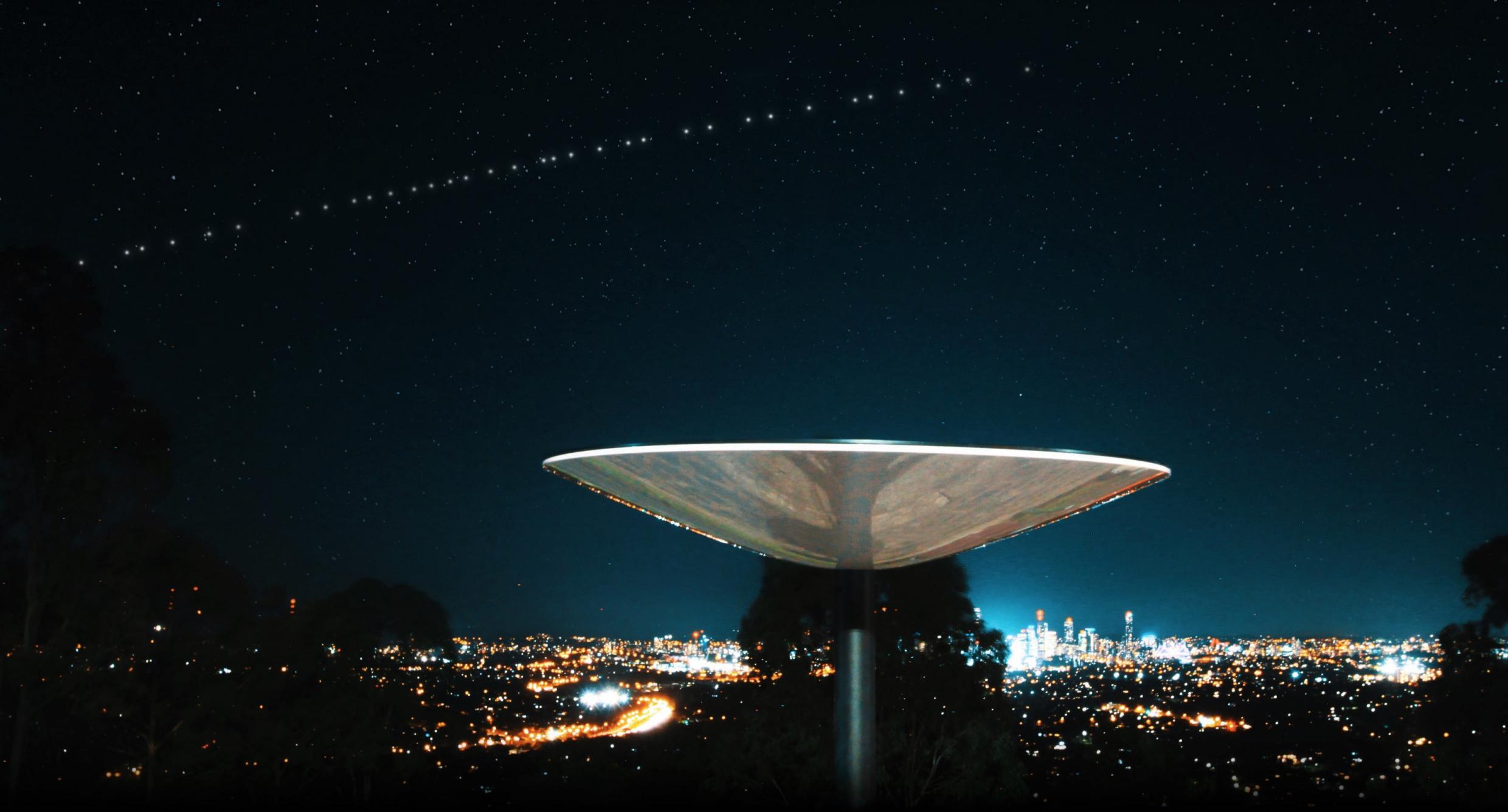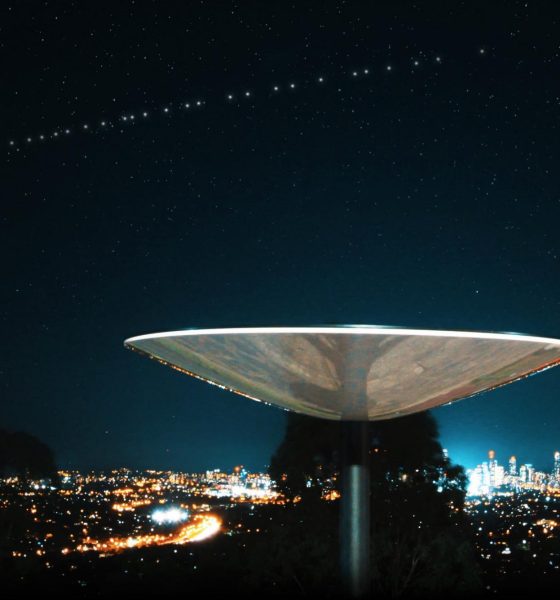

News
SpaceX VP says Starlink is almost ready to revolutionize in-flight internet
Speaking on a panel at an aviation conference, a senior SpaceX sales executive says that the company is in talks with “several…airlines” to provide in-flight internet to passengers with its Starlink satellite constellation.
Unlike all current in-flight connectivity (IFC) providers, which rely on a handful of satellites in geostationary orbits ~36,000 km (~22,500 mi) above the Earth, SpaceX’s Starlink constellation is currently made up of ~1600 spacecraft just 550 km (340 mi) up – known as low Earth orbit (LEO). Aside from guaranteeing that any uncontrolled spacecraft or debris reenter in just a few years instead of millennia, Starlink’s home in LEO also means that the network can offer far superior latency (also known as ping).
Being more than 50 times closer to the Earth’s surface also makes it much easier for SpaceX to deliver far more bandwidth to a single vehicle. In simple terms, once the Starlink network is decently reliable and its aviation-optimized ‘conformal’ antennas have been refined, qualified, and certified by the FCC and FAA, conditions could quickly become very uncomfortable for incumbents like Gogo and Viasat.
Perhaps not so coincidentally, Gogo’s stock price dropped more than 11% after The Verge’s Joey Roulette first reported on SpaceX’s IFC comments. Closing in on annual revenue close to $1B before the coronavirus pandemic took a sledgehammer to commercial airline travel, Gogo has dominated the western in-flight internet market for about as long as it’s existed. Unfortunately, COVID-19 has not been kind to the IFC industry and Gogo sold off its in-flight internet business to Intelsat – ironically in the midst of bankruptcy proceedings – in late 2020.
For the handful of ailing IFC providers responsible for most in-flight internet services, the arrival of a new competitor – let alone one as promising as Starlink – could scarcely be less welcome. Starlink competitor OneWeb also plans to offer IFC services as early as mid-2022 but the company has been so slow to deploy its already small ~650-satellite constellation that it’s unclear when it will actually be ready to support a significant presence in satellite internet markets.
Starlink, on the other hand, already has more than a thousand operational satellites in orbit, tens of thousands of fixed beta customers actively using the network, and multiple demonstrations of in-flight operations already complete. Notably, while testing just 60 Starlink v0.9 satellite prototypes, SpaceX successfully delivered bandwidth of more than 600 Mbps to a single military aircraft in flight. In comparison, the most cutting-edge Gogo terminal currently promises “speeds of 70+ Mbps” – an order of magnitude less bandwidth saddled with massive latency constraints.
With Starlink’s performance, hundreds of passengers on a single plane could simultaneously stream videos, whereas modern IFC almost invariably prevents even a single paying passenger from streaming video of any kind. Additionally, thanks to the network’s far lower latency, aircraft with Starlink WiFi could feasibly allow passengers to teleconference, make video calls, and even play latency-sensitive multiplayer games while in flight (though whether passengers should be allowed to do so is, of course, a different story).
It remains to be seen when SpaceX might be ready (and certified) to begin connecting commercial airlines to its Starlink network. However, the company has been working on “aeronautical terminals” for more than 16 months and has the distinct benefit of controlling all aspects of its vertically integrated constellation – which is to say that Starlink could be ready for IFC markets far sooner than later.

News
Tesla (TSLA) receives “Buy” rating and $551 PT from Canaccord Genuity
He also maintained a “Buy” rating for TSLA stock over the company’s improving long-term outlook, which is driven by autonomy and robotics.

Canaccord Genuity analyst George Gianarikas raised his Tesla (NASDAQ:TSLA) price target from $482 to $551. He also maintained a “Buy” rating for TSLA stock over the company’s improving long-term outlook, which is driven by autonomy and robotics.
The analyst’s updated note
Gianarikas lowered his 4Q25 delivery estimates but pointed to several positive factors in the Tesla story. He noted that EV adoption in emerging markets is gaining pace, and progress in FSD and the Robotaxi rollout in 2026 represent major upside drivers. Further progress in the Optimus program next year could also add more momentum for the electric vehicle maker.
“Overall, yes, 4Q25 delivery expectations are being revised lower. However, the reset in the US EV market is laying the groundwork for a more durable and attractive long-term demand environment.
“At the same time, EV penetration in emerging markets is accelerating, reinforcing Tesla’s potential multi‑year growth runway beyond the US. Global progress in FSD and the anticipated rollout of a larger robotaxi fleet in 2026 are increasingly important components of the Tesla equity story and could provide sentiment tailwinds,” the analyst wrote.
Tesla’s busy 2026
The upcoming year would be a busy one for Tesla, considering the company’s plans and targets. The autonomous two-seat Cybercab has been confirmed to start production sometime in Q2 2026, as per Elon Musk during the 2025 Annual Shareholder Meeting.
Apart from this, Tesla is also expected to unveil the next-generation Roadster on April 1, 2026. Tesla is also expected to start high-volume production of the Tesla Semi in Nevada next year.
Apart from vehicle launches, Tesla has expressed its intentions to significantly ramp the rollout of FSD to several regions worldwide, such as Europe. Plans are also underway to launch more Robotaxi networks in several more key areas across the United States.
News
Waymo sues Santa Monica over order to halt overnight charging sessions
In its complaint, Waymo argued that its self-driving cars’ operations do not constitute a public nuisance, and compliance with the city’s order would cause the company irreparable harm.

Waymo has filed a lawsuit against the City of Santa Monica in Los Angeles County Superior Court, seeking to block an order that requires the company to cease overnight charging at two facilities.
In its complaint, Waymo argued that its self-driving cars’ operations do not constitute a public nuisance, and compliance with the city’s order would cause the company irreparable harm.
Nuisance claims
As noted in a report from the Los Angeles Times, Waymo’s two charging sites at Euclid Street and Broadway have operated for about a year, supporting the company’s growing fleet with round-the-clock activity. Unfortunately, this has also resulted in residents in the area reportedly being unable to sleep due to incessant beeping from self-driving taxis that are moving in and out of the charging stations around the clock.
Frustrated residents have protested against the Waymos by blocking the vehicles’ paths, placing cones, and “stacking” cars to create backups. This has also resulted in multiple calls to the police.
Last month, the city issued an order to Waymo and its charging partner, Voltera, to cease overnight operations at the charging locations, stating that the self-driving vehicles’ activities at night were a public nuisance. A December 15 meeting yielded no agreement on mitigations like software rerouting. Waymo proposed changes, but the city reportedly insisted that nothing would satisfy the irate residents.
“We are disappointed that the City has chosen an adversarial path over a collaborative one. The City’s position has been to insist that no actions taken or proposed by Waymo would satisfy the complaining neighbors and therefore must be deemed insufficient,” a Waymo spokesperson stated.
Waymo pushes back
In its legal complaint, Waymo stated that its “activities at the Broadway Facilities do not constitute a public nuisance.” The company also noted that it “faces imminent and irreparable harm to its operations, employees, and customers” from the city’s order. The suit also stated that the city was fully aware that the Voltera charging sites would be operating around the clock to support Waymo’s self-driving taxis.
The company highlighted over one million trips in Santa Monica since launch, with more than 50,000 rides starting or ending there in November alone. Waymo also criticized the city for adopting a contentious strategy against businesses.
“The City of Santa Monica’s recent actions are inconsistent with its stated goal of attracting investment. At a time when the City faces a serious fiscal crisis, officials are choosing to obstruct properly permitted investment rather than fostering a ‘ready for business’ environment,” Waymo stated.
News
Tesla FSD v14.2.2 is getting rave reviews from drivers
So far, early testers have reported buttery-smooth drives with confident performance, even at night or on twisty roads.

Tesla Full Self-Driving (Supervised) v14.2.2 is receiving positive reviews from owners, with several drivers praising the build’s lack of hesitation during lane changes and its smoother decision-making, among others.
The update, which started rolling out on Monday, also adds features like dynamic arrival pin adjustment. So far, early testers have reported buttery-smooth drives with confident performance, even at night or on twisty roads.
Owners highlight major improvements
Longtime Tesla owner and FSD user @BLKMDL3 shared a detailed 10-hour impression of FSD v14.2.2, noting that the system exhibited “zero lane change hesitation” and “extremely refined” lane choices. He praised Mad Max mode’s performance, stellar parking in locations including ticket dispensers, and impressive canyon runs even in dark conditions.
Fellow FSD user Dan Burkland reported an hour of FSD v14.2.2’s nighttime driving with “zero hesitations” and “buttery smooth” confidence reminiscent of Robotaxi rides in areas such as Austin, Texas. Veteran FSD user Whole Mars Catalog also demonstrated voice navigation via Grok, while Tesla owner Devin Olsen completed a nearly two-hour drive with FSD v14.2.2 in heavy traffic and rain with strong performance.
Closer to unsupervised
FSD has been receiving rave reviews, even from Tesla’s competitors. Xpeng CEO He Xiaopeng, for one, offered fresh praise for FSD v14.2 after visiting Silicon Valley. Following extended test drives of Tesla vehicles running the latest FSD software, He stated that the system has made major strides, reinforcing his view that Tesla’s approach to autonomy is indeed the proper path towards autonomy.
According to He, Tesla’s FSD has evolved from a smooth Level 2 advanced driver assistance system into what he described as a “near-Level 4” experience in terms of capabilities. While acknowledging that areas of improvement are still present, the Xpeng CEO stated that FSD’s current iteration significantly surpasses last year’s capabilities. He also reiterated his belief that Tesla’s strategy of using the same autonomous software and hardware architecture across private vehicles and robotaxis is the right long-term approach, as it would allow users to bypass intermediate autonomy stages and move closer to Level 4 functionality.








